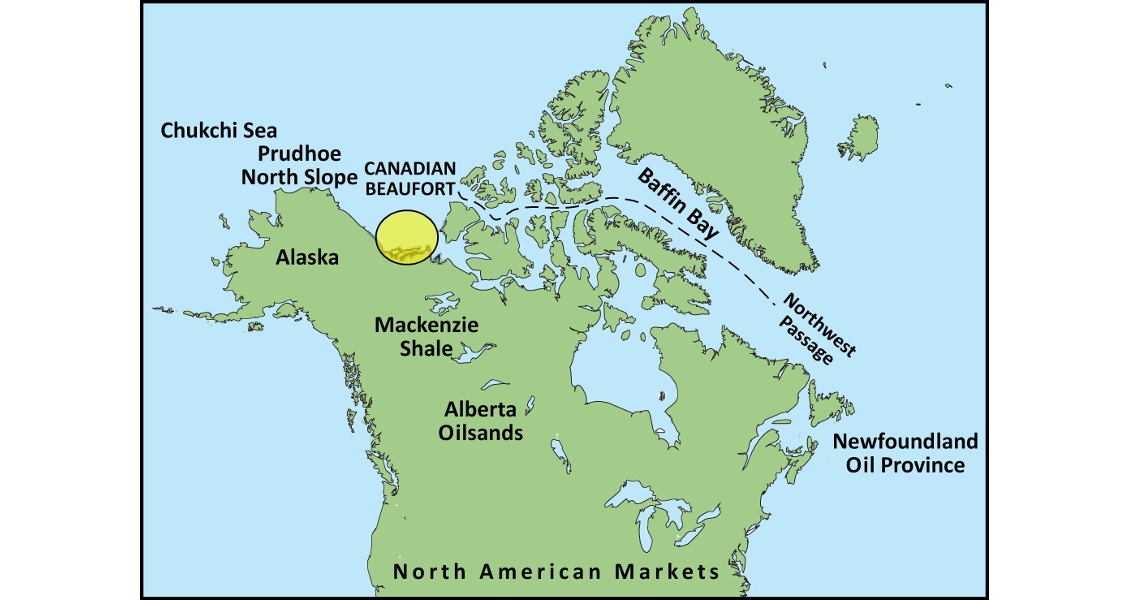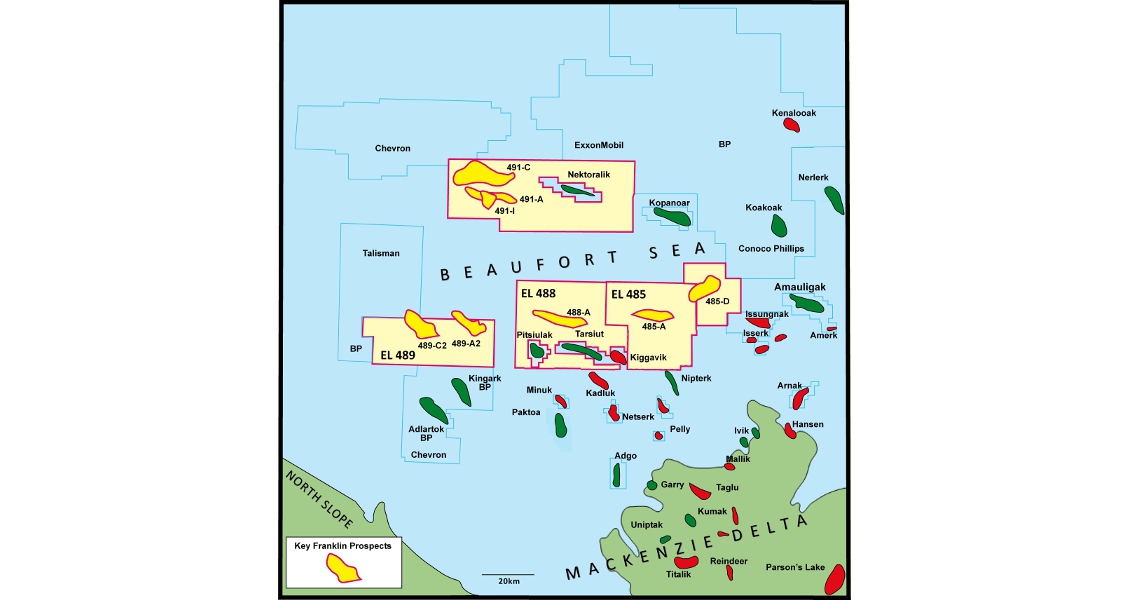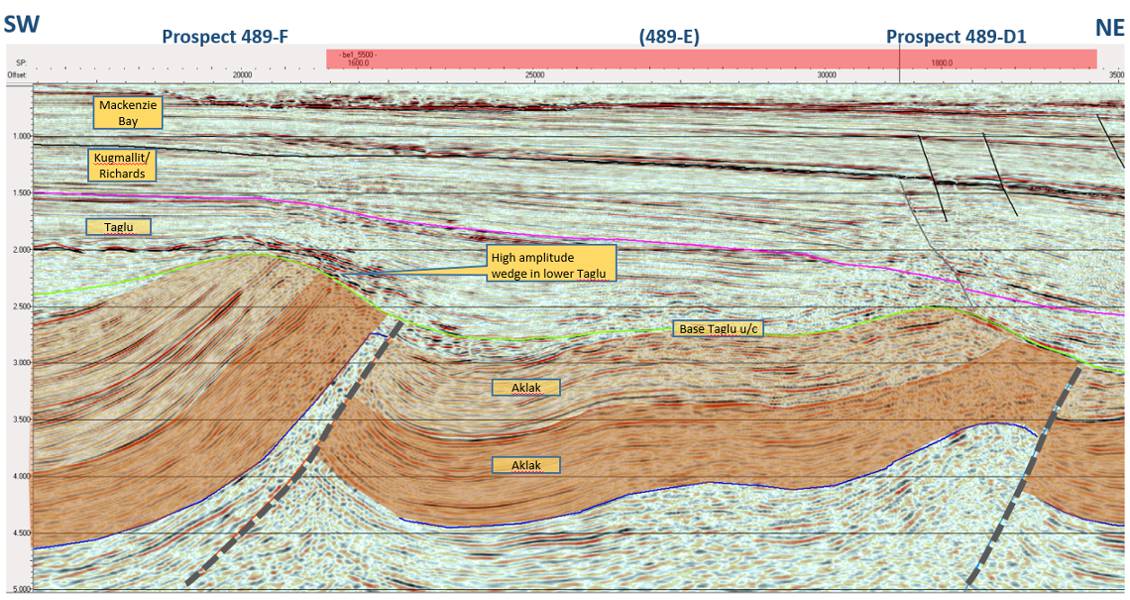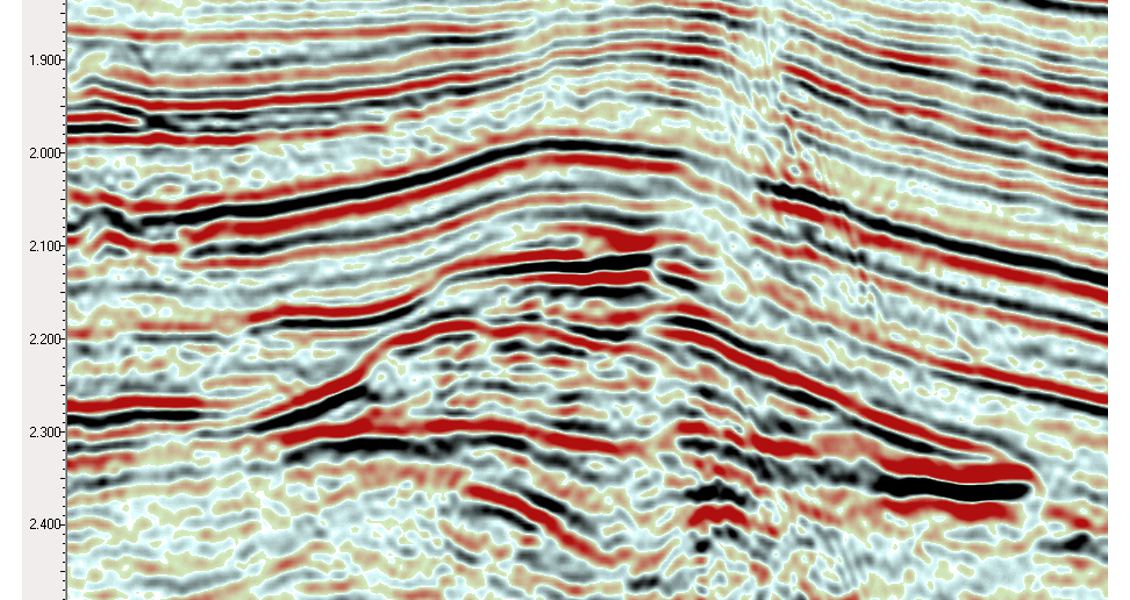The Arctic represents both a challenge and an opportunity for significant reserves replacement. There are fantastic exploration prospects in the region and the allure of adding billions of barrels of contingent resource with just a few wells is driving the majors’ longer term approach to the region.
Road to the North
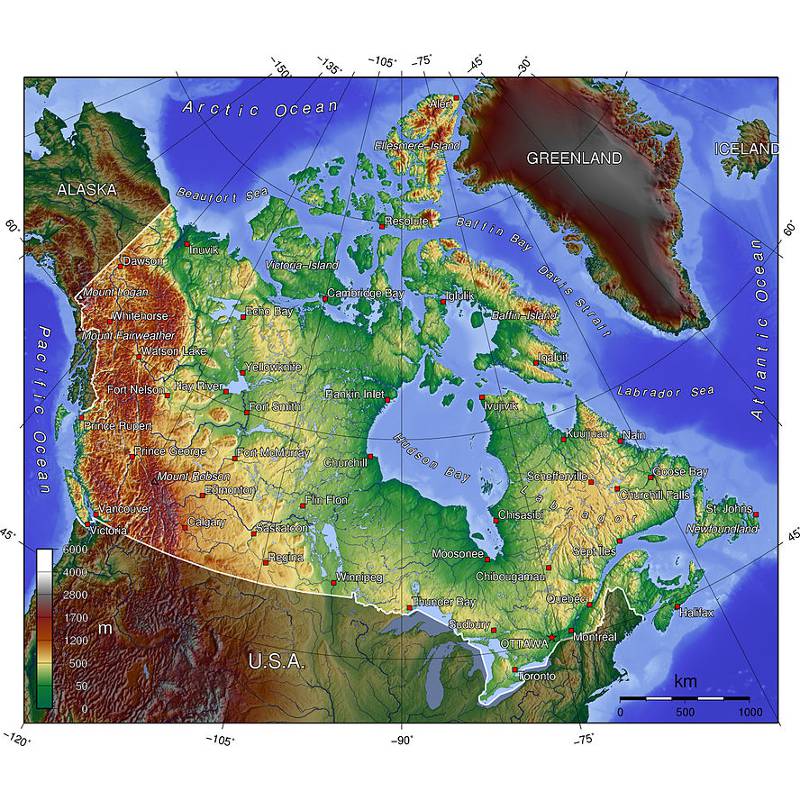 Topographic map of Canada. (Source: Anchjo)The strategic Mackenzie Delta town of Inuvik lies at the northern end of the Dempster Highway, currently being extended to the port at Tuktoyaktuk to form Canada’s only road link to the Arctic Ocean. Lying north of the Arctic Circle, the Mackenzie Delta is a true Arctic environment, with seasonal (but not multi-year) ice cover and highly sensitive ecosystems, primarily in the extensive shallow shelfal and delta distributary environments. Hunting and harvesting of species such as Beluga whales are key activities that any oil and gas operation must take into account.
Topographic map of Canada. (Source: Anchjo)The strategic Mackenzie Delta town of Inuvik lies at the northern end of the Dempster Highway, currently being extended to the port at Tuktoyaktuk to form Canada’s only road link to the Arctic Ocean. Lying north of the Arctic Circle, the Mackenzie Delta is a true Arctic environment, with seasonal (but not multi-year) ice cover and highly sensitive ecosystems, primarily in the extensive shallow shelfal and delta distributary environments. Hunting and harvesting of species such as Beluga whales are key activities that any oil and gas operation must take into account.
Conventional marine seismic can be conducted generally between late July and early October, with the most recent 3D survey in 2012 being able to exit the area via the famous Northwest Passage, resulting in a significant saving in demobilization costs. Drilling has been achieved year-round using a range of novel drilling units. One of these, the SDC, remains in the region off Herschel Island and is an ideal candidate to drill wells in up to 50m of water.
Exploration Promise
Exploration for oil and gas in the Canadian Beaufort reached a high point in the late 1970s, when a large number of wells were drilled, primarily in the shallow shelfal waters of the Mackenzie Delta. Generous tax incentives drove companies to explore in this harsh environment on the most rudimentary of seismic data and, despite these issues, exploration success rates were over 50% and a number of plays were opened up. Over a billion barrels of oil were discovered along with many trillions of cubic feet of gas, but there is considerable remaining undiscovered potential according to several authors, including the US and Canadian Geological Surveys.
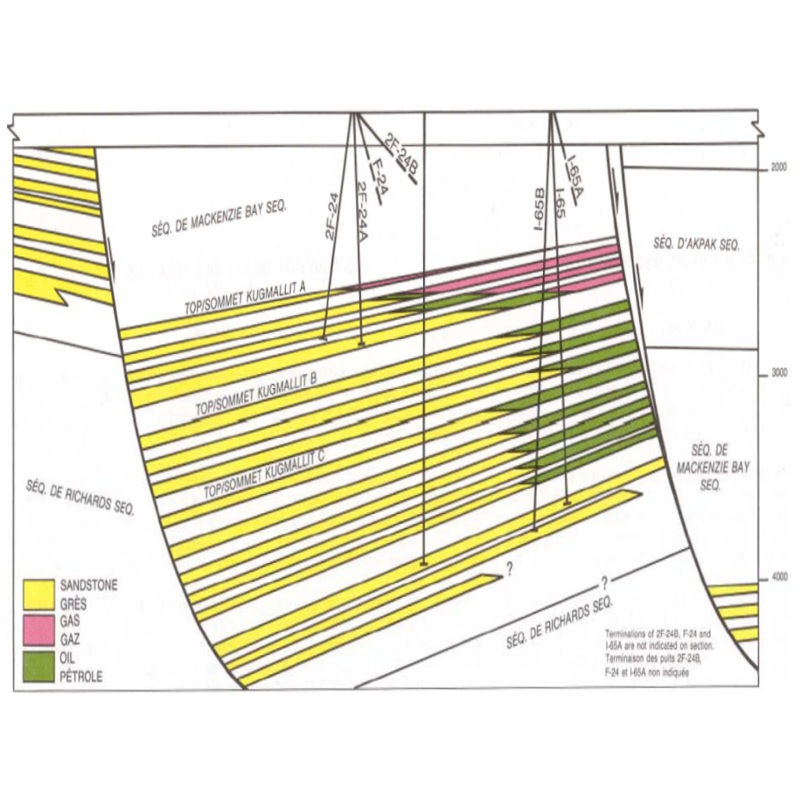 Cross section through the Amauligak Field.For decades the dream for Canada was to evacuate this gas southwards through the Northwest Territories to Alberta, but no viable export route ever materialized, nor is one envisaged in the foreseeable future. This led to a slowdown in exploration activity.
Cross section through the Amauligak Field.For decades the dream for Canada was to evacuate this gas southwards through the Northwest Territories to Alberta, but no viable export route ever materialized, nor is one envisaged in the foreseeable future. This led to a slowdown in exploration activity.
However, with an export option now available through the Alaskan TAPS line to Valdez, oil plays are again a focus for exploration. The most recent well to be drilled offshore was the 2005 Paktoa oil discovery (240 MMbo). Meanwhile, ConocoPhillips are assessing the development of the 300–500 MMbo Amauligak discovery, situated in the shallow waters of the delta, and ExxonMobil are in the early stages of planning an exploration well in the deepwater area to the north. All eyes have been focused recently on Shell’s drilling campaign across the border in Alaska and further progress here will create more momentum for exploration on the Canadian side.
Petroleum Plays
The Canadian Beaufort Sea is dominated by the Mackenzie Delta system, the second largest in North America. The Mackenzie River has been supplying sediment to the delta from the Canadian interior since the Late Cretaceous, and has deposited in excess of 14 km of sediment fill in the accommodation space created by the opening of the Canada Basin between the Alaskan North Slope and the Canadian Arctic Islands. The delta overprints the rifting episode associated with the Canada Basin. This in turn is overprinted in the south-western part by Brookian orogenic compression that created the major structures of the Alaskan North Slope, such as Prudhoe Bay.
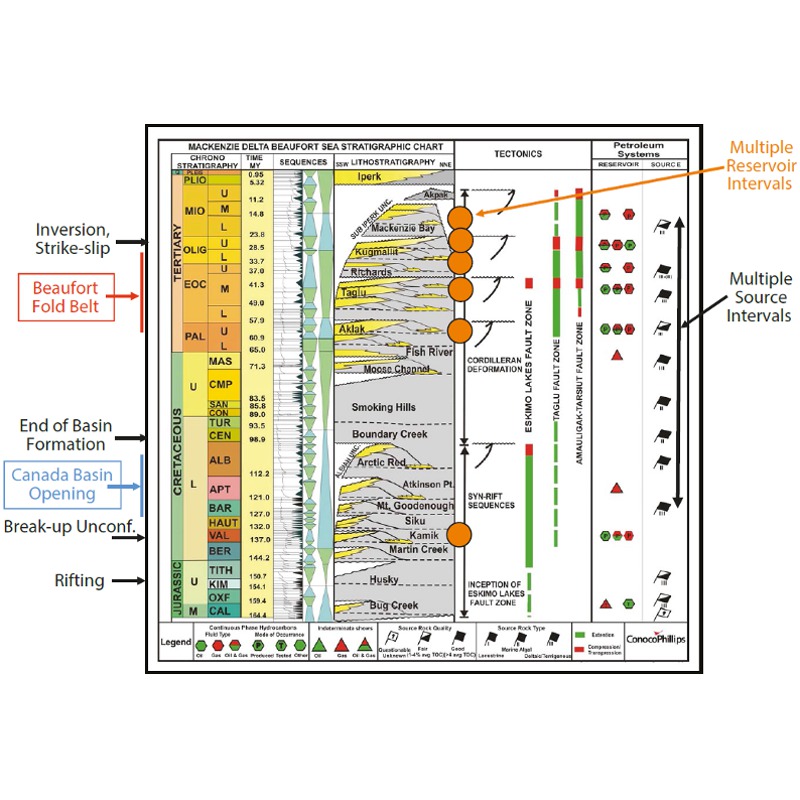 Mackenzie Delta general stratigraphy (courtesy ION, after ConocoPhillips 2004)The northward-prograding delta system deposited sediments with a generally more marine nature northwards into the basin, resulting in a gradual increase in oil-prone source rocks to the north. Most of the discoveries onshore are gas prone, such as the giant Taglu gas field, with some minor oil present. In the shallow waters of the present day delta-top, hydrocarbon type is a mixture of oil and gas (eg. Amauligak), while moving into the deeper water, the main hydrocarbon phase is oil (eg. Kopanoar). There are exceptions to this general rule, for example the West Atkinson oil discovery, which is situated onshore on the eastern part of the delta, where the oil is thought to be sourced from deeper, Devonian source rocks. In general, though, if you are looking for oil, you have to be offshore.
Mackenzie Delta general stratigraphy (courtesy ION, after ConocoPhillips 2004)The northward-prograding delta system deposited sediments with a generally more marine nature northwards into the basin, resulting in a gradual increase in oil-prone source rocks to the north. Most of the discoveries onshore are gas prone, such as the giant Taglu gas field, with some minor oil present. In the shallow waters of the present day delta-top, hydrocarbon type is a mixture of oil and gas (eg. Amauligak), while moving into the deeper water, the main hydrocarbon phase is oil (eg. Kopanoar). There are exceptions to this general rule, for example the West Atkinson oil discovery, which is situated onshore on the eastern part of the delta, where the oil is thought to be sourced from deeper, Devonian source rocks. In general, though, if you are looking for oil, you have to be offshore.
The Mackenzie Delta developed in several discrete pulses of delta-building. These pulses led to the identification of a number of source-reservoir pairs where the delta-top and pro-delta areas young northwards. The delta-top and pro-delta submarine fan facies represent the best reservoir targets; the vast majority of the delta system is mudprone with sporadic sand pulses. Structural traps are developed in three main settings. Firstly, in the south-west of the area, the Brookian compression has created spectacular compressional structures, originally thought to be diapiric in nature, but modern seismic has illuminated the bedded nature of these ‘diapirs’ and they are better explained as tight compressional folds detached on the base of a mobile shale.
Further north, a series of normal fault blocks is developed, with faults predominantly throwing down to the basin and with a listric, growth fault character. The Amauligak discovery is developed as a classic fault and dipbounded closure with multiple stacked delta-top sands filled to different oilwater contacts. It can be inferred that the bounding fault is a highly effective seal and that clay smearing along the fault may be responsible for this.
The third main structural type is a northern trend of dramatic structures, probably related to gravity collapse of the delta system and the creation of a kind of toe-thrust regime. Like the Brookian structure to the south, these are very tight structures. Some of them have been drilled, yielding primarily oil discoveries such as Kopanoar and Koakoak.
Franklin’s acreage contains several of the structural play types described above. In addition, however, undrilled stratigraphic plays represent significant upside that was unrecognizable on the early vintage seismic data. Most spectacular is the development of mounded base-of-slope submarine deposits of the Pliocene-age Iperk Formation (one of the youngest delta pulses).
The Canadian Beaufort in 2015
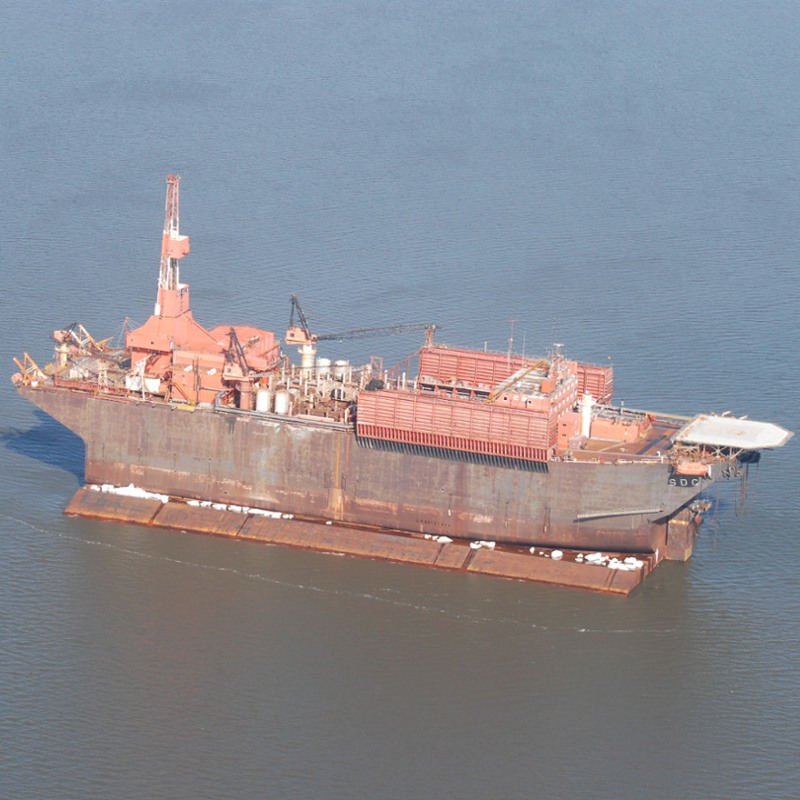 SDC drilling unit – Arctic-capable and ready to drill wells in up to 50m of water. (Source: Paul Barrett)Activity in the Canadian Beaufort has been very low even during the heady years of $100+ oil price in the recent past. Chevron-Statoil undertook a 3D in 2012. Prior to this survey, ION acquired several vintages of BeaufortSPAN data – the deep regional lines that are their trademark – which illuminated the vast array of both proven and undrilled petroleum plays in the basin.
SDC drilling unit – Arctic-capable and ready to drill wells in up to 50m of water. (Source: Paul Barrett)Activity in the Canadian Beaufort has been very low even during the heady years of $100+ oil price in the recent past. Chevron-Statoil undertook a 3D in 2012. Prior to this survey, ION acquired several vintages of BeaufortSPAN data – the deep regional lines that are their trademark – which illuminated the vast array of both proven and undrilled petroleum plays in the basin.
Short term fluctuations in oil prices do not materially affect the long term viability of Arctic oil plays and Shell’s recent announcement that it will be restarting its Alaskan Arctic exploration program underlines the fact that exploration drilling in the non-Russian Arctic can be achieved in a post- Macondo world. Franklin Petroleum is taking advantage of the worldwide softening of seismic acquisition costs to undertake a 3D seismic survey over its key prospects in summer 2015. Using ION’s pioneering BeaufortSPAN survey to evaluate the area has led to a prospect inventory of around 8 Bbo potential resource that the 3D survey is designed to firm up to drillable status.
Going forward, levels of Arctic activity can be expected to pick up. Not just Shell, but other majors are coming to the realization that large resource numbers can be achieved through a handful of Arctic wells, compared to thousands of shale play wells, while many other high impact exploration areas around the world, such as Namibia and Angola, are not producing the results anticipated.
In essence, the Arctic, especially basins like the Mackenzie-Beaufort, are areas where exploration risk is low, execution risk is manageable and the resources are world-class.


